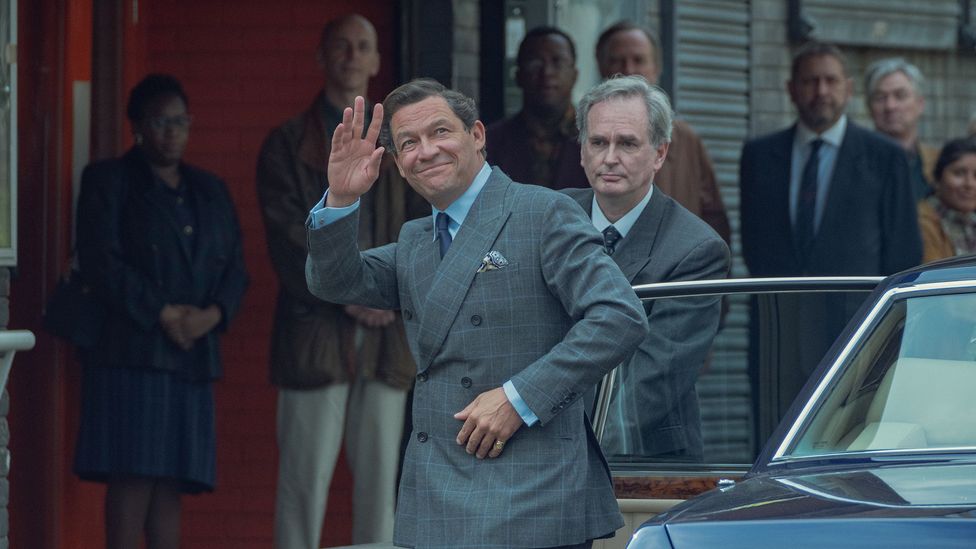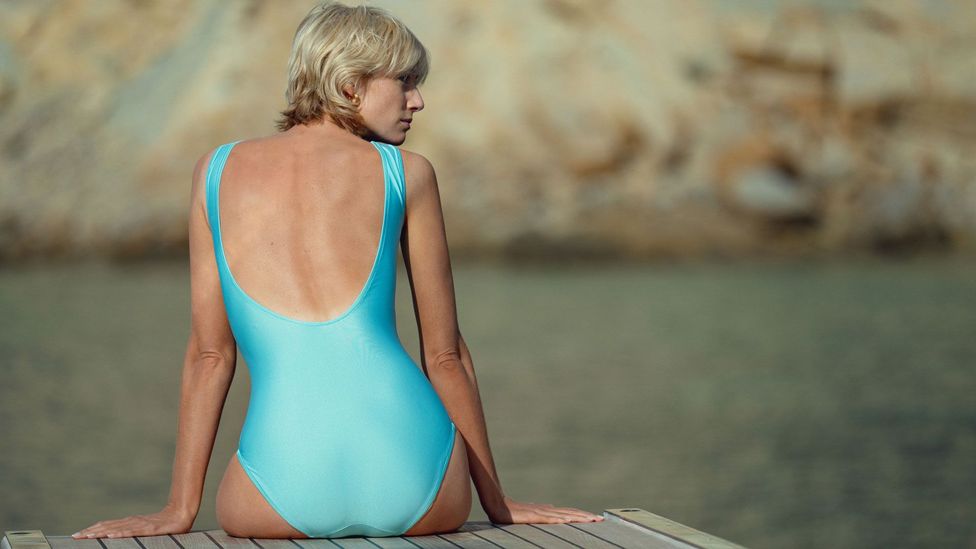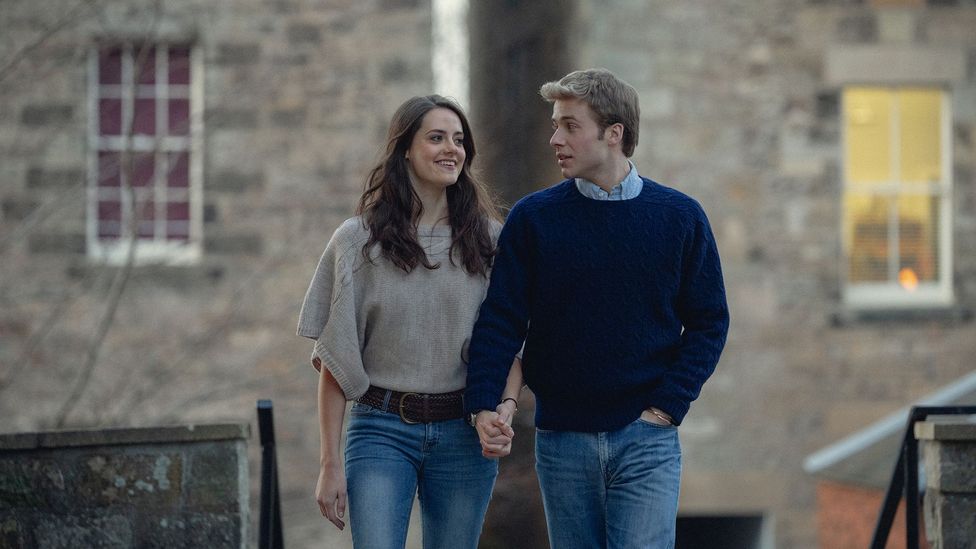The secret to playing King Charles III

When Dominic West was first cast in The Crown as the then-Prince Charles, now King Charles III, he was nervous, as he knew costume and make-up could only do so much. “I was slightly in despair,” he told Still Watching Netflix back in November 2022. “How was I going to get the physicality of this guy right because the only time I really look like Charles is from behind, because the hair is just perfect?”
More like this:
– 12 shows to watch this November
– How The Crown has changed the view of the Royals
– The period drama that’s the new Bridgerton
His despair was misplaced: in last year’s fifth series, picking up the baton from Josh O’Connor’s younger version of Charles, he managed to perfectly capture the mannerisms, posture, speech, cadence and general spirit of the royal. While a lot of credit for his transformation must fall to the actor himself, due praise should also be given to one particular member of the crew: choreographer and movement director Polly Bennett.

Polly Bennett helped Dominic West capture Charles’s distinct tics and gestures, like his frequent head-tilts (Credit: Netflix)
Movement coaches are increasingly a key element of any biopic or real-life dramatisation.
Bennett has not only helped transform all The Crown’s lead actors into royals from season three onwards, but her other high-profile gigs include helping Rami Malek to an Oscar for playing Freddie Mercury in Bohemian Rhapsody; honing Austin Butler’s lip-curling and pelvic thrusting in Baz Luhrmann’s Elvis; and advising Naomi Ackie on how to become Whitney Houston in I Wanna Dance with Somebody. As for upcoming projects, both Kingsley Ben-Adir and Timothée Chalamet have been instructed by her about playing Bob Marley and Bob Dylan, respectively, in big new Hollywood biopics.
To begin working on any actor’s metamorphosis, Bennett starts with hours of painstaking research. “When I’m working to transform people into people who already exist, it is kind of a dissertation, a deep dive or a private investigator job trying to understand how they act and what that reveals about their psychologies,” she tells BBC Culture. “I try and take something we see and turn it into something practical for an actor, avoiding impressions, trying to find out why [a character’s] body is the way it is.”
‘Heavy is the head’
The physiology of King Charles is where she started with West, creating a particular conceit for him that helped him capture the monarch’s unique tilt of his head with his slow pace of speaking. What was the trick? She asked West to imagine he was wearing a very heavy crown, mentally and physically embodying the phrase ‘heavy is the head that wears the crown’. “This crown is hovering over his head like a Shakespearean emblem and then putting weight on his head,” she says. “While Prince Philip was forward-leaning because he didn’t have that potential that he was going to step into anything, Dominic’s visualisation was a little bit heavier.”
Other tasks that Bennett set West were even more unusual. To help him capture Charles’s almost stuttering cadence, as well those head-tilts, she describes one exercise they worked on in rehearsals that “was drawing a little unhappy face with your forehead: imagine you’ve got a pencil coming from your forehead and you have to draw a sad face while you speak. Because that creates an image for an actor to work with.” The pair also noted that Charles has the same routine every time he steps out of a car in public; checking his front pocket, side pocket and then cufflinks. “This is someone who has found a mechanism for coping in that public arena where someone is looking in at you at all times,” she explains.
How much of what she is doing with movement also helps actors tap into the psychologies of a person? A lot, Bennett explains, adding that although she’s never trained as a psychologist, “the more I do this job, the more I understand we’re just animals that someone put shoes on”. “The very way you’re sitting now is laden with everything that’s come before that,” she continues, “where you are in your house, how you feel today, what you’ve eaten. It is all psychological and we are bodies that reveal stories. As I often find myself saying to the cast of The Crown: ‘the body doesn’t lie’.”

Bennett worked with Elizabeth Debicki to help capture Diana’s sense of exhaustion at being photographed (Credit: Netflix)
Part of Bennett’s work was also to ensure there was a coherence between the different generations of actors playing the same roles. One quality of Charles’s life Bennett focused on when it came to instructing both O’Connor and West was the abundance of time he has, as he waits to finally assume his destiny as king, and the debilitating effect that has on him in his life.
“[Charles] is literally waiting all the time. When you see him walking, he walks at a different speed to the [other] royals – you notice that his place in the world is not vibrant or fast because it’s subdued. It’s a helpful mantra to have… you’re in limbo, and my job is to go, ‘What does limbo feel like?’ That was a really gorgeous discovery.”
Embodying grief
Moving into the final season of The Crown – which has been split into two parts, with the first streaming on Netflix from 16 November – a key focus will be on the death of Princess Diana in a car crash in Paris in 1997. While the series will not explicitly show the crash, it will cover the aftermath, with the public outpouring of grief and the royals’ reactions to her death. In an interview recorded earlier this year, West explained: “There were some really heavy scenes this season and a lot of tears for Charles. There are a lot of scenes of Charles trying to come to terms with [Diana’s death] and breaking the news to his sons, trying to help his sons mourn and having varying degrees of success at that.”
There’s also one scene reportedly where a “ghost” of Diana will appear, although creator Peter Morgan himself has disputed that description saying that her posthumous appearance is “more an indication that, when someone has just passed, they’re still vivid in the minds of all those close to them and love them.” While there has already been some controversy around the use of this device in the series, Bennett explains that this added a further emotional depth for characters, especially for West as Charles. “When grief strikes, when we get affected by a trauma, your body changes. So I would say there is a shift in our Charles when this happens because of an absence of a figure. Then, when you’re looking at your children and they’re looking like your partner is half of them, that changes how you look at them, as if you’re almost seeing a ghost.”
The lead image being used to promote the first half of the sixth season is actor Elizabeth Debicki, who plays Diana, in a recreation of an iconic shot of the Princess of Wales, then just weeks before her shocking death, sitting pensively on the diving board of a yacht, dressed in a turquoise swimsuit. For Debicki to arrive at this state and point in Diana’s frenetic “hunted” life, there was work Bennett did with her that harked back to her workshops with Emma Corrin’s previous younger Diana in series three and four – with both actors, she asked them to imagine the walls were lined with cameras.
“When I first started working with Elizabeth, it started being about not what Emma had done, but then it came full circle. I think there’s a beauty in that dialogue between the series and between the actors that haven’t worked together. I found similar imagery [for the two] in prey, the impact of the weight of cameras, of being seen, the paparazzi, when you think about being the most photographed woman in the world… it’s absolutely horrible. Imagining it, it must have made her feel embarrassed, worn out, exhausted, so aware of herself.

Meg Bellamy and Ed McVey as a young Kate Middleton and William; their blossoming romance will be covered in the second half of the final series (Credit: Netflix)
“Then, the swimsuit shot worked with the weight of all that and how you physicalise the exhaustion of that. It was amazing in terms of it capturing Elizabeth’s playing of the craved solitude of that moment.”
The younger generation
As well as also working with Imelda Staunton in her final outing as Her Royal Highness – this time helping her focus on the ageing process, along with themes of “physical endurance… of the constant state of being observed and judged, how that changes the body and how the perception of your body changes” – Bennett has also been a part of ushering in the new generation of the Royal Family to the screen: a grown-up Prince William (played by two actors, Rufus Kampa and Ed McVey), Harry (Fflyn Edwards, then Luther Ford), and Kate Middleton (Meg Bellamy), William’s future wife.
What struck Bennett about working on these characters was the nature of history repeating itself – how William as the future heir might have the same worries and preoccupations as his father, for example, which would then impact on his own body and how he holds himself. “Arguably they are sort of the same,” Bennett says. “William is stepping into the same space that Charles was psychologically, it’s all a circle… Charles married Diana, who was unknown; William married Kate, then an unknown. While [like Edward VIII] Harry goes on to marry a divorced actress from America. It is just crazy how we become what we’ve been around and both how beautiful and terrifying those similarities are.”
Meanwhile Bennett’s take on the relationship between Diana and her boys is that, either consciously or subconsciously, the way she interacted with them spoke to their different positions as the future King and the “spare”, to use the phrase Harry himself employed for the title of his autobiography. “When I worked with Elizabeth and the sons, Elizabeth would always sort of be touching Harry. [That’s because] there were so many images of Diana standing with Harry; she allows William to walk in front of her but she’s always with Harry. And I thought that was a really helpful game to give to the actors; subtly we’re placing the idea of the mother’s protection over the one who doesn’t have the role and subconsciously we’re pressing the idea that William will be ahead of his mother.”
With movement coaches like Bennett being employed more frequently in the industry to create fuller and more credible performances and productions, the proof of her work is in the watching – and the numerous accolades for the actors playing these true-life roles. For Bennett, West’s ever-deeper immersion in the role of Charles has been a real joy to watch.
“My favourite thing is the moment when an actor hears what you say and it unleashes something in their performance that they haven’t discovered before. It means that [the actor] is not just putting something on, [they’re] playing something through. That’s why I think Dominic has really stepped into Prince Charles [for this latest series]” – like all the returning lead actors, she says. “They’re not fighting to perform the character, they can sit in the bath of it a bit more.”
The first half of the sixth and final season of The Crown will stream on Netflix from 16 November.
If you liked this story, sign up for The Essential List newsletter – a handpicked selection of features, videos and can’t-miss news delivered to your inbox every Friday.
If you would like to comment on this story or anything else you have seen on BBC Culture, head over to our Facebook page or message us on Twitter.








